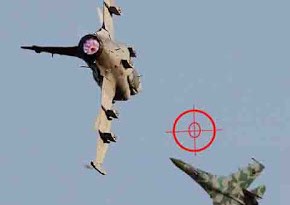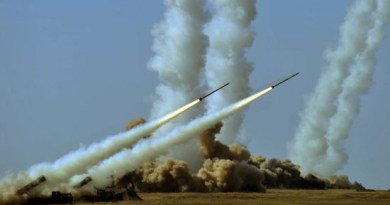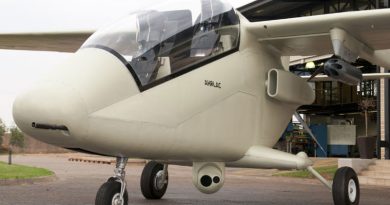The five Chadian weapons of war Nigeria is terrified of
For decades, the relationship between Nigeria and Chad has been fraught with mistrust and suspicion. Especially since the start of the decade long counter-terror war in 2011.
While it is unlikely that a confrontation between this two nations will ever arise, though, historically, this has not always been the case. As a matter of fact, an altercation which occurred between Nigeria and Chad in the late 1970s led to a shooting mini-war.
In that particular incident, shortly after the Nigerian Civil War, thousands of Nigerians were occupying uninhabited islands on the fringe of the Lake Chad. This migration was exacerbated by the effects of climate change ravaging the whole Northwest and Central Africa.
The “almost war” between Nigeria and Chad
On 18 April 1983, without provocation or warning, three thousand Chadian crack troops in a well planned and coordinated operation, and led by Idris Derby — who is now the president of Chad, — invaded and seized 19 Nigerian islands on the Lake Chad axis in Borno state. Six other Borno communities were also annexed within twenty-four hours.
Surprised by this brazen unprovoked attack, the Nigerian president Alhaji Shehu Shagari ordered the commander of the Nigerian Army 3rd Army Division led by General Muhammadu Buhari — who is also ironically the current President of Nigeria, to defend the Republic.
Meanwhile, the Chadian Force’s plan was to lure the bulk of Nigeria’s armor towards a myriad of concealed trenches and tank traps in order to trap and then destroyed them at close range by concealed troops wielding anti-tank weapons and RPGs.
The Nigerian Army supported by the Air Force which was still fired up from the recent Nigeria-Biafran War quickly swung into action. Four thousand Nigerian soldiers under air and artillery protection besieged the invaders from four flanks.
With this unexpected infantry manoeuvre, the Chadian invasion plans fell apart, disoriented Chadian soldiers began abandoning their positions in a disorganized manner, and fleeing the battlefield in droves, leaving behind their vehicles and equipment.
Thereafter, Nigerian soldiers pursued the retreating Chadian troops up to 50 kilometres from N’Djamena, the Chadian capital city before they withdrew, hereby ending the war.
A similar event which occurred in 2015 almost triggered a confrontation between Nigeria and Chad. Regarding this particular incident, the Chadian government reportedly refused to contribute it’s own military troops to the newly formed joint military tasked force to combat the Boko Haram menace.
Additionally, following credible intelligence reports that the Chadian president Idris Derby is secretly funding and arming the terror organization, Nigerian military service chiefs during a high-level meeting in Abuja drew up plans to hit selected targets in Chad.
This audacious plan was quickly shelved because any armed assault on Chad will definitely be met with resistance from France which could even ally with Chad if a war broke out.
Chadian military improvements attributable to the counter-terror operations
Since then, both France and the U.S. has provide military aid to Chad, while Mr. Deby, a former general, has invested a significant part of the nation’s oil wealth in modernizing its military, including an air force that can strike enemy positions.
“The Chadians have a real combat capacity that is undeniable,” said Col. Louis Pena, chief of staff of Operation Barkhane, the French military’s N’Djamena-based counterinsurgency effort in the Sahel region.
“A large part of the Chadian army is well equipped and well trained. They charge into the rumble and have no fear. It’s one of the countries and armies on which we rely very strongly.”
Several times, the Chadian military has proven it’s mettle in the campaign against Boko Haram in 2015.
In absolute terms, the Chadian military is by no means a match for the Nigerian, but we cannot deny the Chadians are superior to the Nigerian military in certain indices.
Even though a confrontation resulting to a shooting war between these two countries is very remote and unlikely, however, here are five Chadian weapons of war Nigeria is wary of.
Mikoyan Gurevich MiG-29 multirole fighter jet
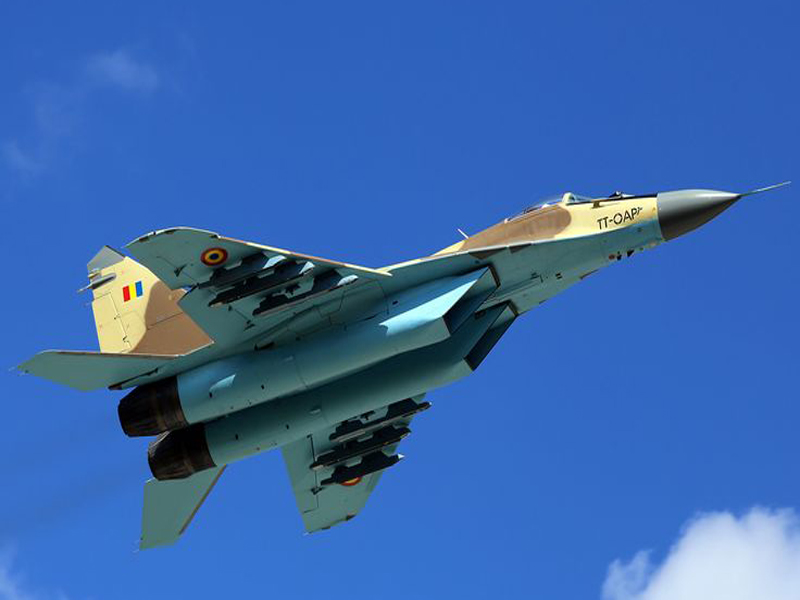
The MiG-29 Fulcrum is a twin-engined multirole fighter jet and the backbone of the Chadian Air Force fighter fleet. On May 2014, Idris Derby reportedly acquired three advanced MiG-29’s from Ukraine. So far the total number in service with the Chadian Air Force is unknown.
Although two were severely damaged recently in early 2017 due to a storm but has been reportedly repaired and put back in service by American technicians.
Since introducing this aircraft, it immediately outclassed every other air superiority aircrafts in the region including the Chengdu F-7 Air Guard currently used by Nigeria.
The MiG-29 can out climb and out fly any comparative strike aircraft in the region. It was developed to counter U.S. fighters such as the McDonnell Douglas F-15 Eagle, Boeing F/A-18 Super Hornet and the General Dynamics F-16 Fighting Falcon.
The MiG-29 can be equipped with a wide range of weaponries including S-5, S-8 and S-24 rockets, 2 × R-27 air-to-air missiles, 4 × R-60 AAMs, 4 × R-73 AAMs and 6 × 665 kg (1,466 lb) bombs in seven hardpoints (6 × underwing, 1 × fuselage.
A 30 mm Gryazev-Shipunov GSh-30-1 autocannon with 150 rounds is also mounted for straffing runs and dogfights.
MiG-29s are very agile aircraft, capable of out-maneuvering the performance of Nigeria’s F-7 AirGuard. However, their relatively low fuel capacity relegated them to short-range air defense missions.
Sukhoi Su-25 Frogfoot Close Air Support aircraft
This heavily armed fighter was built for one sole purpose, destroying armored vehicles during close air support missions. It is heavily armored with titanium sheets to protect the pilot and essential components from battle damages.
Comparable to the American A-10 Warthog, the SU-25 Frogfoot is built purely for close air support for troops.
With Nigeria’s limited aerial defence capabilities, limited to the antiquated Roland mobile air defence missile system and a few Shilka multi-barreled low level anti aircraft system, the Chadian Su-25 aircraft can greatly demolish Nigeria’s troops formation, while inflicting heavy losses to its men and materiel.
Nigeria first experienced Chadian air power in January 2015, when the Sukhoi Su-25 jets in pursuit of Boko Haram -bombed the Nigerian city of Gamboru located at the Cameroonian border.
The Su-25 attack jet is equipped with a distinctive nose-mounted laser rangefinder, A DISS-7 doppler radar used for navigation.
With eleven hardpoints, the Su-25 Groggily has a capacity of up to 4,400 kg (9,700 lb) of stores,with provisions to carry several types of bombs, rockets and missiles including: BETAB-500 concrete-penetrating bomb, FAB-250, 500 general-purpose bomb, FAN-500 bomb, KAB-500KR TV-guided bomb and ZAB-500 incendiary bomb.
It’s missiles armaments includes Kh-23, Kh-25ML, Kh-29L air-to-ground missile and the Kh-28 anti-radiation missiles.
While it’s rocket armaments panoply includes the S-5, S-8, S-15, S-24 and S-25.
The Su-25 Frogfoot can also fly at night, in most weather conditions.
SA-13 Gopher and SA-6 Gainful Mobile Air Defense Missile System
SA-13 Gopher mobile air defence system
The SA-13 GOPHER is a very capable short-range, low altitude SAM system.
It was designed to defend troops on the frontlines from low-level aircraft, helicopters, drones and precision-guided munitions.
It missile interceptor carries a 5 kg HE warhead and is fitted with an improved passive all-aspect infra-red seeker unit.
It can engage targets between 500 meters and the maximum effective range of 5000 meters with altitude engagement of 3500 meters.
SA-6 Gainful air defense system
On the other hand, the SA-6 Gainful is another sophisticated self-propelled air defense system.
It has seen successful combat actions during the Chad civil war. The Chadian Ground Forces has an active battery (twelve) of the deadly SA-6 SAM.
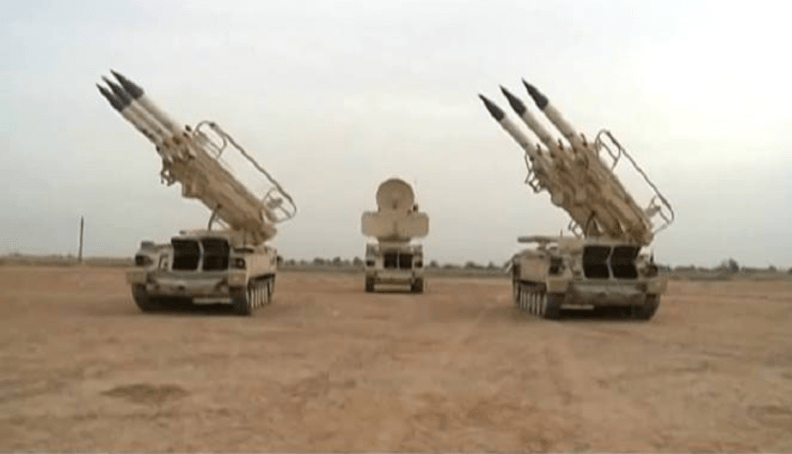
The SA-6 is a tracked mobile medium-range surface to air missile system. It can acquire and track targets at 75 km and fire semi-active radar homing missiles with a top speed of Mach 2.8 to an altitude of 46,000 ft.
The system use a three rail-launched guided missiles utilizing an optical sight and continuous wave target illuminator.
Missiles can detonate on impact or be set with a proximity fuze. Each is powered by a solid-fuel rocket motor.
Deploying the SA-6 Gainful and SA-13 Gopher mobile air defence systems will automatically put all Nigerian Air Force aircraft operating in the area at risk.
PLL-05 6×6 Self-Propelled Howitzer (SPH)
The PLL-05 SPH is a heavy class gun carrying infantry fighting vehicle, it features a 360-degree, traversable powered turret mounting a 120mm main gun.
The 120mm gun is used to provide indirect fire support though it can also engage targets directly. It is also designed to fire both howitzer and mortar type projectiles as needed.
The ammunition can has a range of 10 kilometers while with the rocket-assisted version targeting out to 13 kilometres.
The PLL-05 is characterized by having both indirect fire and direct fire capability; rapid deployment; transportation by air; protection from small arms fire, shell splinters and NBC attack.
The PLL-05 is also armed with a Type 85 12.7 mm anti-aircraft machine gun, mounted to the top of the roof of the turret. A line of three smoke-grenades discharger are mounted to each side of the turret.
The Chadian PLL05 heavy 120mm gun system in addition to its rapid mobility and maneuverbility can track, engage, and destroy every type of armored vehicle currently being used by the Nigerian military except the T-72 main battle tank.
So far, Chad currently possess more than 140 units of this deadly weapon system against Nigeria’s 100 frontline main battle tanks including thirty T-72s and seventy plus Vickers Eagle tank.
As per current Chadian warfare doctrine, the PLL-05 will be escorted by Chadian military anti-tank teams armed with ATGMs and RPGs mounted on technicals. This will be a force multiplier and also provide the PLL-05 brigade with qualitative battlefield advantage.
D-20 152 mm towed gun-howitzer M1955
The D-20 is a is a manually loaded, towed 152 mm artillery piece, manufactured in the Soviet Union during the 1950s.
The D-20 152mm artillery has been used to great effect in numerous conflict across the globe.
The Chadian military has a complement of 18 D-20 artillery while the Nigerian military has just four units.
This weapon’s Maximum firing range is twenty-four kilometers when using rocket-assisted projectile.
The maximum rate of fire is usually stated as five rounds/minute, and 65 rounds/hour sustained.
The range and blast radius of the D-20 152mm artillery underscores the continuing threat that Chad’s conventional weapons pose to Nigeria in the region.
Since the end of the Toyota War, Chad has steadily built up a powerful artillery force, the force includes more than 71 rocket and tube artillery pieces, according to Global Firepower.
Although, it is possible that Nigerian troops are trained to quickly target Chad’s artillery in the event of war.
However, Chad can hide its artillery and rocket launchers across the country in order to protect the guns and rocket launchers from Nigerian air and artillery strikes.
Therefore, if war should break out, the death toll from Chad’s artillery strikes could be enormous, an initial artillery barrage focused on military targets, which would result in significant casualties.
Also, a larger attack targeting civilians would yield several thousand casualties with the potential to displace millions of Nigerian citizens.


